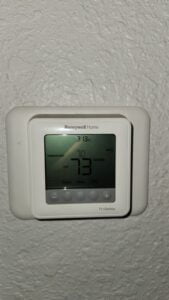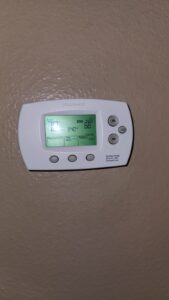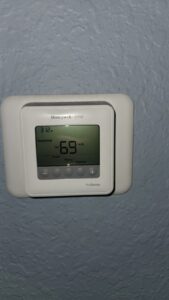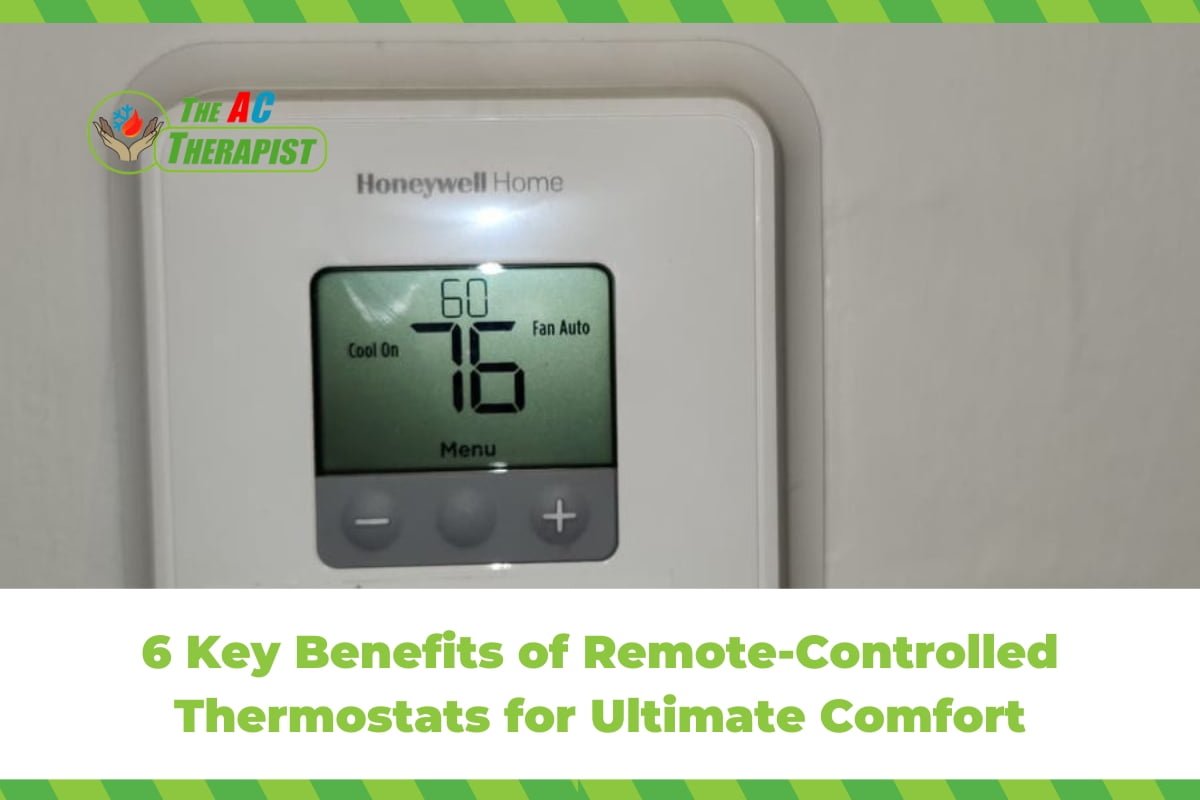6 Key Benefits of Remote-Controlled Thermostats for Ultimate Comfort
In the modern era of smart technology, remote-controlled thermostats have emerged as a game-changer in home climate control. These innovative devices not only offer convenience but also enhance energy efficiency, comfort, and much more. In this comprehensive guide, we will explore the six key benefits of integrating remote-controlled thermostats into your home.
Understanding Remote-Controlled Thermostats
In the realm of home automation and smart technology, remote-controlled thermostats stand out as a pivotal innovation, reshaping how we interact with our home environments. These devices not only bring convenience and control into our hands, literally but also contribute significantly to energy efficiency and enhanced comfort. This comprehensive guide aims to demystify remote-controlled thermostats, helping homeowners understand their functionality, benefits, and the transformative impact they can have on home living.

What are Remote-Controlled Thermostats?
Remote-controlled thermostats, often referred to as smart thermostats, are temperature control devices that can be operated remotely through various means such as smartphones, tablets, or computers. Unlike traditional thermostats, they connect to your home Wi-Fi network, allowing you to manage your heating and cooling systems from anywhere with an internet connection.
These thermostats work by connecting to your home’s HVAC (Heating, Ventilation, and Air Conditioning) system, just like a traditional thermostat. However, the smart aspect comes into play with their ability to connect to the internet. This connectivity enables you to control the thermostat remotely, set schedules, and even allow the thermostat to learn your preferences over time for automated adjustments.
Key Features and Technologies
- Remote Access and Control: Control your home’s temperature from anywhere using a smartphone or computer.
- Geofencing: Some models use your phone’s location to adjust the temperature when you’re away and resume normal settings when you return.
- Learning Capabilities: Certain smart thermostats can learn your schedule and preferences, automatically adjusting the temperature for optimal comfort and efficiency.
- Energy Usage Reports: Many models provide detailed reports on your energy consumption, helping you understand and manage your usage better.
- Integration with Other Smart Devices: They can often be integrated with other smart home devices, creating a more cohesive and automated home environment.

How Do They Work?
Remote-controlled thermostats, commonly known as smart thermostats, work by integrating advanced technology with your home’s heating, ventilation, and air conditioning (HVAC) system. Here’s a breakdown of how they function:
1. Connectivity:
- Wi-Fi Enabled: Smart thermostats connect to your home’s Wi-Fi network. This connection is crucial for remote access and control. It allows the thermostat to communicate with your smartphone, tablet, or computer, enabling you to control your home’s temperature from anywhere with an internet connection.
2. Interface and Control:
- User Interface: These thermostats typically have a digital interface that displays the current temperature, settings, and sometimes even local weather information. This interface can be a touchscreen on the device itself or accessible via an app on your smartphone or computer.
- Remote Access: Through a dedicated app, you can adjust temperature settings, set schedules, and sometimes even view energy consumption reports from your phone or computer, regardless of your location.
3. Integration with HVAC System:
- Compatibility: Smart thermostats are designed to be compatible with most modern HVAC systems. They connect to your heating and cooling systems just like traditional thermostats but offer more advanced control.
- Control Mechanisms: The thermostat sends signals to your HVAC system to start or stop heating or cooling based on the temperature settings you’ve chosen. This process is much like traditional thermostats but with more precision and customization options.
4. Learning and Automation:
- Learning Your Schedule: Some advanced models can learn your daily schedule and temperature preferences over time. They automatically adjust the temperature based on your routine – for example, lowering the heat when you’re typically away and increasing it before you return home.
- Geofencing: This feature uses your smartphone’s location to adjust your home’s temperature settings. For instance, it can turn down the heating or cooling when you leave a certain area and turn it back on when you return.
5. Energy Usage Monitoring:
- Reports and Insights: Many smart thermostats provide detailed reports on your energy usage. They can show you how your temperature settings impact your energy consumption and suggest ways to optimize energy use, helping you save money on utility bills.
6. Integration with Other Smart Home Devices:
- Smart Home Ecosystems: These thermostats can often integrate with other smart home devices, such as voice assistants, smart lights, and security systems. This integration allows for a more cohesive and automated home environment.
Benefits of Remote-Controlled Thermostats
1. Unmatched Convenience
The first and most apparent benefit of remote-controlled thermostats is the convenience they offer. Imagine adjusting your home’s temperature from the comfort of your bed or even from miles away. This section will delve into how these thermostats can be controlled via smartphones, tablets, or computers, providing a level of convenience that traditional thermostats simply cannot match. We will also discuss how this feature is particularly beneficial for those with mobility issues or busy lifestyles.
2. Enhanced Energy Efficiency
One of the most significant advantages of remote-controlled thermostats is their ability to save energy. This section will explore how these devices help reduce energy consumption by allowing homeowners to create heating and cooling schedules based on their daily routines. We will provide data and statistics on how much energy and money can be saved on average, and discuss features like geofencing and learning algorithms that further enhance energy efficiency.
3. Improved Comfort and Control
Remote-controlled thermostats offer an unprecedented level of control over your home’s climate, leading to enhanced comfort. This part of the blog will discuss how you can adjust temperatures for different times of the day or for specific rooms, ensuring optimal comfort throughout your home. We will also explore the ability of these thermostats to learn and adapt to your preferences over time, providing a personalized experience.
4. Real-Time Alerts and Monitoring
Another significant advantage of remote-controlled thermostats is their ability to provide real-time alerts and monitoring. This section will cover how these devices can notify you about significant changes in your home’s temperature, potential HVAC issues, or when it’s time for maintenance. We will discuss the importance of these alerts in preventing costly repairs and maintaining an efficient HVAC system.
5. Integration with Smart Home Ecosystems
Remote-controlled thermostats are often part of a larger smart home ecosystem. This part of the blog will delve into how these thermostats integrate with other smart devices like voice assistants, smart lights, and security systems, creating a seamless and interconnected home experience. We will discuss the benefits of this integration and how it contributes to a more convenient and efficient lifestyle.
6. Long-Term Cost Savings
While the upfront cost of a remote-controlled thermostat might be higher than a traditional one, the long-term savings are substantial. This section will focus on the cost-effectiveness of these thermostats, discussing how the energy savings they provide translate into significant financial savings over time. We will provide examples and scenarios to illustrate these savings.

Remote-Controlled Thermostats disadvantages
While remote-controlled thermostats offer numerous benefits, like any technology, they also come with potential drawbacks. It’s important to consider these cons to make a well-informed decision:
1. Initial Cost:
- Higher Upfront Investment: Smart thermostats are generally more expensive than traditional thermostats. The initial cost can be a significant factor, especially for those on a tight budget.
2. Complexity and Usability:
- Learning Curve: For some users, especially those not tech-savvy, the array of features and settings on a smart thermostat can be overwhelming. The complexity of programming and using these devices might be a deterrent.
- Dependence on Technology: These thermostats rely heavily on technology, including Wi-Fi and smartphone apps, which might not appeal to everyone.
3. Installation Challenges:
- Wiring Requirements: Not all homes have the necessary wiring (like a C-wire) to support smart thermostats. Installing new wiring can add to the cost and complexity.
- Compatibility Issues: Some older HVAC systems might not be compatible with certain smart thermostat models, limiting options or requiring additional investment in compatible systems.
4. Dependence on Power and Internet:
- Wi-Fi Reliance: A stable Wi-Fi connection is essential for the remote functionality of these thermostats. If your home experiences frequent internet outages, this could be a significant inconvenience.
- Electricity Outages: During power outages, the smart features of the thermostat won’t function, which could be a problem in areas with unreliable power.
5. Privacy and Security Concerns:
- Data Security: Like any connected device, there is a risk of personal data being compromised. Smart thermostats collect data about your home and lifestyle, and potential security vulnerabilities could expose this information.
- Hacking Risks: There’s a small risk of smart thermostats being hacked, especially if they are not properly secured or if the manufacturer does not regularly update the software.
6. Overdependence on Automation:
- Reduced Manual Control: Some users might find the automated adjustments and learning features intrusive or less intuitive than manual control.
- Potential for Incorrect Learning: If the thermostat incorrectly learns your preferences or schedule, it could lead to discomfort or inefficiency.
7. Maintenance and Updates:
- Software Updates: Regular software updates are necessary to keep the thermostat functioning optimally and securely. This requires ongoing attention and maintenance.
- Hardware Lifespan: Like any electronic device, smart thermostats have a finite lifespan and may need to be replaced after several years of use.
Installation and Compatibility
Installing a remote-controlled thermostat and ensuring its compatibility with your home’s HVAC system are crucial steps in upgrading to smart climate control. Here’s a guide to help you understand the installation process and compatibility considerations:
1. Compatibility Check:
Before purchasing a remote-controlled thermostat, it’s essential to verify its compatibility with your existing HVAC system.
- HVAC System Type: Check if your system is a standard central heat and air system, a heat pump, electric baseboard heating, or another type. Different thermostats are designed to work with different types of systems.
- Wiring Requirements: Most smart thermostats require a C-wire (common wire) to provide continuous power. Examine your current thermostat’s wiring to see if a C-wire is present. If not, some smart thermostats come with adapters, or you might need to have a C-wire installed.
- Voltage Requirements: Ensure that the thermostat is compatible with your system’s voltage. Standard residential systems usually use 24V, but some older homes or systems might have different requirements.
2. Installation Process:
While many homeowners opt for professional installation, especially if new wiring is needed, DIY installation is possible with some basic understanding and precautions.
- Turn Off Power: Before starting, turn off the power to your HVAC system at the breaker box to prevent electrical hazards.
- Remove Old Thermostat: Carefully remove the old thermostat, ensuring you don’t damage existing wiring. It’s a good idea to take a picture of the wiring setup for future reference.
- Label Wires: As you disconnect wires from the old thermostat, label them to keep track of where each wire connects. This step is crucial for the proper setup of your new thermostat.
- Mounting and Wiring: Follow the manufacturer’s instructions to mount the new thermostat’s base plate. Connect the wires to their corresponding terminals on the new thermostat.
- Power and Setup: Once everything is connected, turn the power back on. Follow the setup instructions provided by the manufacturer to connect the thermostat to your Wi-Fi network and configure it through its app.
3. Professional Installation:
If you’re not comfortable with DIY electrical work, or if your system requires additional wiring (like a C-wire installation), it’s wise to hire a professional. An HVAC technician can ensure that the thermostat is installed correctly and is fully compatible with your system.
4. Post-Installation Check:
After installation, it’s important to test the thermostat to ensure it’s functioning correctly with your HVAC system. Run through heating, cooling, and fan operations to check for any issues.

Choosing the Right Thermostat
Choosing the right remote-controlled thermostat for your home involves considering several factors to ensure you get a device that meets your needs and is compatible with your HVAC system. Here’s a guide to help you make an informed decision:
1. Determine Your HVAC System Type:
- Compatibility: The first step is to identify the type of heating and cooling system you have (such as central heat and air, heat pump, or electric baseboard heating). Different thermostats are designed for different systems.
- Voltage and Wiring: Check if your system is low voltage (common in most modern homes), line voltage, or a millivolt system. Also, verify if your system has a C-wire, which is needed for most smart thermostats to power their Wi-Fi connection and digital display.
2. Identify Desired Features:
- Wi-Fi Connectivity: Essential for remote control via smartphones or computers.
- Geofencing: Automatically adjust your home’s temperature based on your smartphone’s location.
- Learning Capabilities: Some thermostats can learn your schedule and adjust settings accordingly.
- Energy Reports: Provides insights into your energy usage and tips for efficiency.
- Integration with Smart Home Devices: If you have or plan to have a smart home system, choose a thermostat that can integrate seamlessly with other devices like smart speakers, lights, or security systems.
- User Interface: Consider if you prefer a touchscreen, a more traditional dial, or a simple digital display.
3. Budget Considerations:
- Initial Cost vs. Long-Term Savings: Higher upfront costs for smart thermostats can lead to significant energy savings over time.
- Installation Costs: Factor in the cost of professional installation if you are not comfortable installing it yourself, especially if additional wiring is needed.
4. Brand and Model Research:
- Reputable Brands: Look into well-known brands like Nest, Ecobee, Honeywell, and others that have a track record of reliability and customer support.
- Reviews and Ratings: Check online reviews and consumer reports to gauge user satisfaction and performance.
5. Aesthetic Preferences:
- Design: Consider how the thermostat will look in your home. Some prefer a modern, sleek look, while others might want something that blends more traditionally.
6. Additional Considerations:
- Warranty and Support: Check the warranty period and the type of customer support offered.
- Software Updates: Ensure the thermostat receives regular firmware updates for continued performance improvements and security.
Exploring the Transformative Impact of Remote-Controlled Thermostats
In summary, the journey through the 6 key benefits of remote-controlled thermostats reveals a world where comfort, convenience, and efficiency converge seamlessly. Remote-controlled thermostats stand as a testament to how modern technology can enhance our daily living experience. From the ease of adjusting your home’s temperature from anywhere to the significant energy savings, remote-controlled thermostats offer a level of control and customization that was once a thing of the future.
The AC Therapist, deeply versed in the nuances of HVAC systems, recognizes the transformative impact these remote-controlled thermostats have on home environments. By embracing these advanced devices, homeowners can enjoy a remarkable improvement in their comfort levels. The ability of remote-controlled thermostats to learn and adapt to your lifestyle, providing personalized comfort, is nothing short of revolutionary.
Moreover, the integration of remote-controlled thermostats into your smart home ecosystem, as highlighted by The AC Therapist, brings forth an era of interconnected convenience. The synergy between these thermostats and other smart devices enhances the overall functionality and efficiency of your home.
The AC Therapist’s expertise in installing and maintaining remote-controlled thermostats ensures that you can harness these benefits to their fullest potential. Whether it’s the energy-efficient scheduling, the real-time alerts, or the long-term cost savings, the advantages of remote-controlled thermostats are manifold.
In conclusion, remote-controlled thermostats are not just a luxury but a necessity for those seeking the ultimate comfort in their living spaces. With The AC Therapist’s guidance and support, transitioning to these smart devices is a smooth and rewarding journey. Embrace the future of home comfort with remote-controlled thermostats and experience a new level of living where convenience, efficiency, and comfort are at your fingertips.








